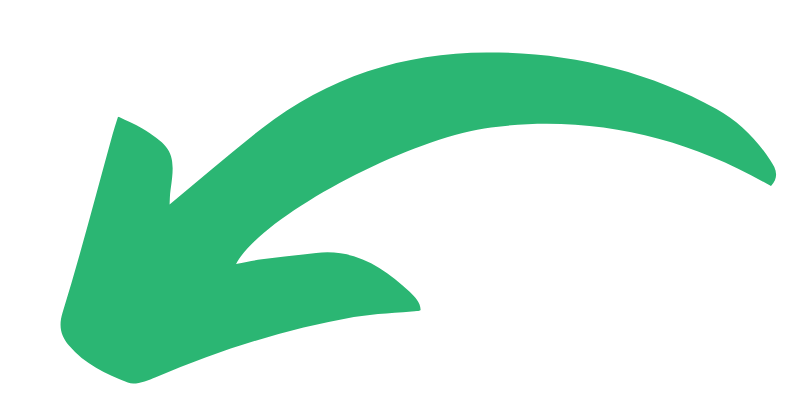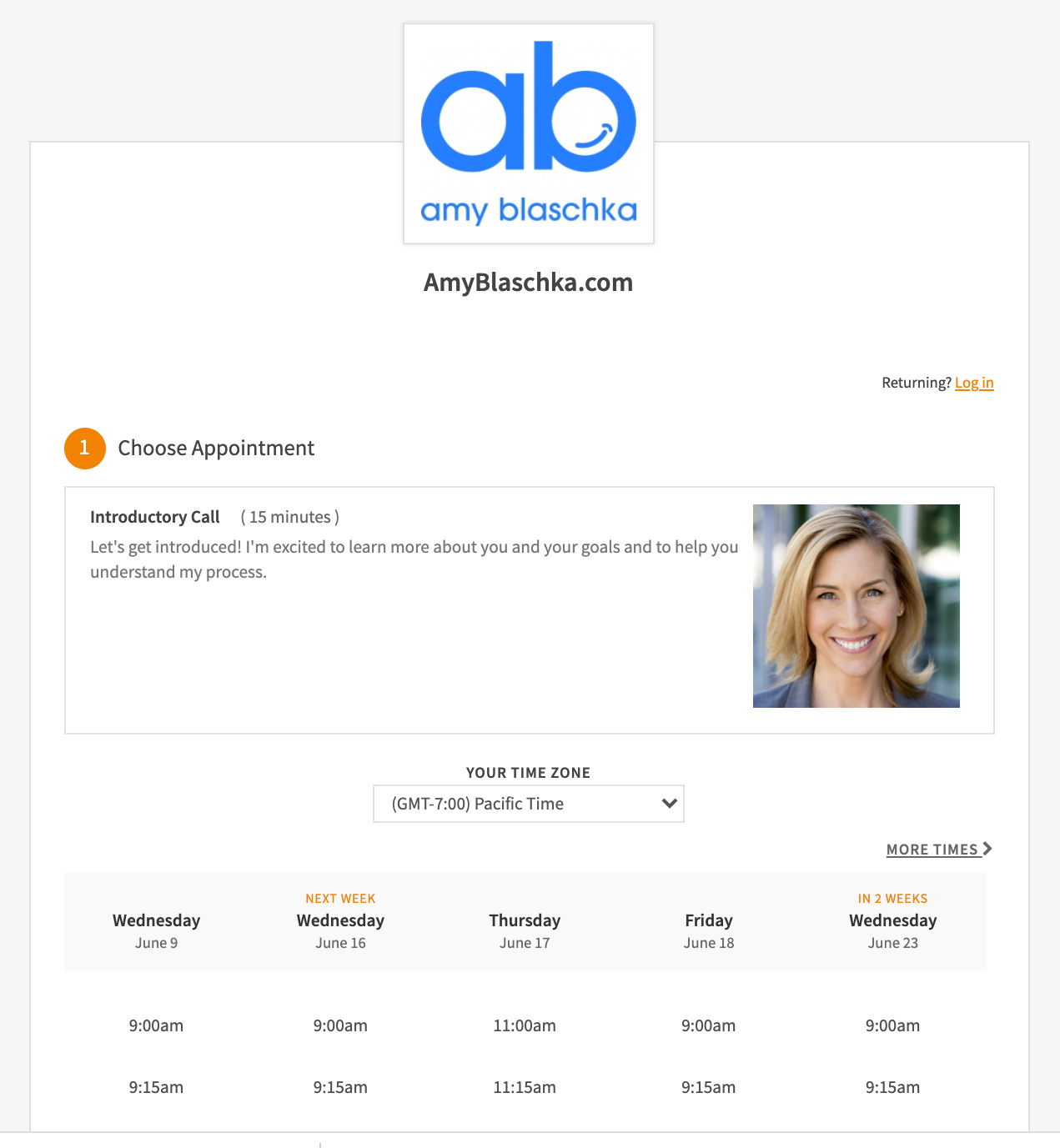Did that headline get your attention*?
Good. I know how precious it is because attention is another word for your time.
And last week, we talked about how important it was to protect your time, how to make time management your superpower a la Tim Ferriss, and eight ways to make career headway that weren’t time-consuming or difficult.
Continuing along that theme, I want to share why spending some time now will help you save it later, especially if you’re a solopreneur like me.
There are so many time-consuming elements to running your own business, and almost all of those are tasks that happen more than once. For me, they’re things like:
Pre-qualifying website leads
Further qualifying and responding to leads
Scheduling an introductory call
International invoicing
Answering common queries
Did you notice that NONE of those things involved me putting my talents to their highest and best use (aka writing)?
They’re necessary, and a means to an end, but man, when I first started, they used to be such a time-suck. Worse, I always felt like they were pulling me away from being “Creative Amy.” The hours I spent repeatedly doing this stuff meant less time to be in my flow/wheelhouse/zone of genius/sweet spot/fill in the blank with your favorite metaphor.
So let’s break down some of my favorite time-saving (though not time-free) solutions.
Pre-qualifying leads from my website
If you’ve visited my website, you know that I share TONS of information on my two services and process. (And if you haven’t visited, go have a look-see; I’ll wait.)
If someone is interested in working with me, they’re asked to fill out a brief form on my Contact Me page, where I collect the usual suspects: name, email address, subject, how they found me, etc.
The one addition that has made all the difference? Adding the required question, “What are you interested in hiring me to do?” (emphasis on hiring), and then giving them checkboxes covering the two things I do.
Here’s what it looks like:
Did you notice what’s not there? The things I don’t do.
This is where specificity can be your friend, friends. I don’t just say I “ghostwrite”; I say I “ghostwrite social media articles and updates.” Requiring someone to reach out, followed by me responding and then going back and forth only to learn that they’re looking for something else, is a total time waster for both of us. That’s why I like to be crystal clear about my offerings.
I know, I know, I can hear the folks out there saying, “But Amy, aren’t you worried that you’ll turn away potential business for people wanting you to write other things?”
In a word, no.
In a few more words, I’d rather devote my energy to attracting the people looking for my services. Of course, I’ll occasionally get someone who asks me about ghostwriting their book. This is something I’ve done in the past but don’t do these days because these long-term engagements require me to devote most of my time to a single client, which is impossible with my client roster. Instead, I’ll politely decline and try to refer them to a friend who can help.
That said, if I’ve already worked with a client, I’ll occasionally take on related assignments. The difference is that those are happening after our preliminary work together.
Does it prevent the spray and spam folks from using my site’s Contact Me to pitch me? Not always. (Pro tip: If this is your M.O., stop. Immediately. I can’t imagine you’re getting results this way, and it really leaves a bad taste in the mouths of those with whom you’re hoping to work.) But for most people, this extra bit sets the expectation that I’m a professional whose specific services you’re hoping to engage. (That’s fancy talk for you’ll be paying me.)
Further qualifying and responding to leads
Of course, not all leads come from my website. I’ll often get direct messages through LinkedIn inquiring about my services. But even when I do get a lead from my site, I can’t be sure that they’ve read through everything. To cover my bases, I summarize my ICP (ideal client profile), my process, deliverables, time frame, and fees in my response.
This does two things: it allows the prospect to understand how we’d work together and to determine if this a good fit for them, program- and budget-wise. If it isn’t, they know upfront and no harm, no foul, no wasted time for either of us. If it is, then we can proceeds to the next step, scheduling an introductory call. (See more about that in the next section.)
Do I write these from scratch every time? Nope. I have three templates (one for each service and one for those interested in both) that I customize based on the information they’ve provided as part of their inquiry. Having these boilerplates has saved me so much response time and any unnecessary time spent talking with someone who wasn’t a good fit. (Seriously, before I did this, I ended up spending an hour on a call with someone who didn’t have the budget and “really wasn’t interested in the program at this time.” Ugh.)
Scheduling an introductory call
When it’s clear that a potential client feels like we could be a good fit, it’s time to schedule an introductory call, either by phone or Zoom (for my international prospects). Rather than go back and forth on the “When are you free?” or Does this week work?” questions, I provide a link to schedule the call, which brings them to my scheduling software.
I use Acuity Scheduling, but there are plenty of other options available, like Calendly. The beauty of using scheduling software is that once you invest the time upfront to create your different types of meetings, their duration and time between, and your availability for each, you can customize everything. Plus, you have control of your calendar, so you can block out days or weeks where you’re not available at all or limit certain types of meetings to certain days or time frames.
It also allows you to integrate with Zoom for seamless scheduling for your clients. Even better? You can (and should) customize every bit of communication to reflect your personality, brand, and voice. Honestly, THIS is what took the most time for me during its setup. I wanted to rewrite every message and touchpoint, from confirmation to a cancellation.
The other awesome benefit of using a scheduling software tool is that it allows both parties to see meeting times in their time zones. Since I have international clients, this is fantastic for me, but it’s also great for those clients based on the East Coast as I’m in the San Francisco Bay Area and three hours behind them. (I remember the headaches of trying to sort out good times to meet manually. Time zone math? No, thank you.)
The $15/month charge and early time spent on set up was well worth the countless hours and headaches this has saved me.
International invoices
Similar to time zone math is converting USD to whatever currency my client uses. I avoid that altogether by using PayPal for all my invoicing, which displays currency in its local form to my clients and instantly allows them to pay by credit card. Plus, it allows me to schedule those invoices that are recurring.
Plus, rather than go back and forth with paper invoicing, getting checks cut, and waiting for payment, PayPal emails me to let me know when my clients have paid, so I can easily transfer the funds into my bank account. Of course, PayPal takes a cut for its trouble, but the peace of mind, time saved, and ease of doing business is well worth it to me.
Answering common queries
I love questions, but if you’re always stuck in reactionary mode answering them, it will forever pull your focus away from the work you should be doing, and you’ll end up being busy but not productive.
In other words, you’re FAQ’d.
To avoid that, take note of those often-asked queries and then answer them ONCE on your website. (You can check out mine by scrolling down this page on my site. You’ll see that I have answers in both written and video formats. You can do the same or even incorporate infographics or audio clips. You do you, friend. ) Now, everyone has access, and you’ve saved yourself time. Plus, if someone asks you one of those FAQs outside of your website, you can copy and paste your answer in response to their email or message. Easy peasy.
The good news is that if you’re asked the same questions about your expertise, products, or services, again and again, you’re likely sitting on a career gold mine. In my latest Forbes article, I share how to leverage the power of FAQs.
Shine on,
Amy
P.S. Now that we’re inbox-exclusive, you might want to follow my musings across the interwebs on Forbes, LinkedIn, Twitter, Instagram, and Clubhouse.
P.P.S. When I’m not writing this newsletter or getting my FAQs on, I’m a social media ghostwriter. (Yep, that’s a thing.) I help founders, entrepreneurs, and CXOs craft their stories to communicate and connect better by magnifying their reach and impact. (Think personal branding and thought leadership.) Learn more here.
P.P.P.S. You, my coruscant friend, have great taste in newsletters—thanks for subscribing! First time here? (Aww… hey there, newbie!) Be sure to check out the archives to catch up on previous issues, and feel free to share this one with your friends. Or better yet, invite them to join our Illuminate Me tribe!
P.P.P.P.S. And one more thing: It’s tough to grow a newsletter! If you enjoyed this edition of Illuminate Me, I’d love your help in recommending it to your social media following. After all, the best growth “hack” isn’t a hack at all—it’s old school, word of mouth referrals from awesome readers like you.
Not sure what to say? Here’s some tweet-friendly sample text to copy and post:
Do you like illuminating insights on #leadership, #EQ, #communication, #creativity, and #writing, delivered in a fun, easy-to-read style with immediately actionable takeaways?
(Of course you do!)
Subscribe to @amyblaschka's #IlluminateMe newsletter:
https://amyblaschka.substack.com
*Getting—and keeping—someone’s attention is a pretty big deal. In fact, attention is one-half of what Seth Godin calls “the currencies of anybody who wants to make change happen right now,” with the other half being trust. And if you’re someone who wants to make change right now—a more significant impact in the world, solve a problem, or simply change your bank balance for the better—it makes sense to keep attention and trust top of mind. As Seth says, “They’re in a virtuous cycle. You don’t get attention unless you’re trusted. You don’t get trusted unless you get attention.” Makes sense, right? Check out my article here to learn more.











